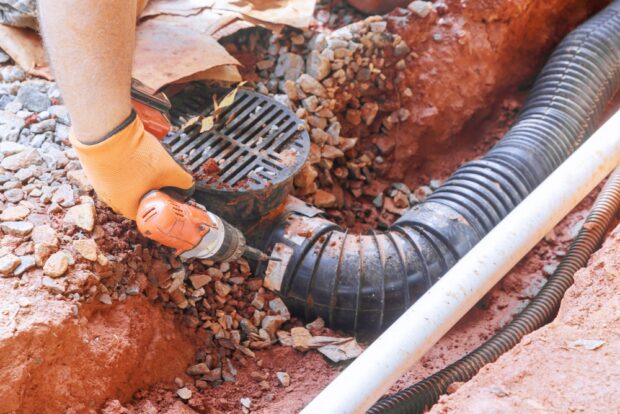Stormwater management in Southwest Idaho is no longer just a peripheral concern for civil engineering firms—it is now a central priority. As urban areas like Nampa, ID, and the broader Canyon County region continue to expand, so too do the challenges associated with controlling runoff and preventing water pollution. In recent years, residents, businesses, and policymakers alike have become increasingly aware of how effective stormwater management practices directly impact community well-being, environmental health, and compliance with state and local regulations.
The rapid population growth seen across Southwest Idaho brings with it more paved surfaces, parking lots, and commercial developments, all of which contribute to increased stormwater runoff. In areas like Nampa, ID, where urbanization is accelerating, this runoff carries pollutants into local waterways, impacting ecosystems and water quality. As a result, cities are taking proactive steps to align with Idaho drainage regulations that set forth clear expectations for sustainable runoff control.
Beyond regulatory compliance, managing stormwater effectively is critical to mitigating flood risks and protecting infrastructure investments. Stormwater runoff in Canyon County poses significant erosion threats, damages public roads, and overburdens sewer systems not designed for the volumes of water resulting from sudden storms. Thus, managing stormwater isn’t just a matter of environmental stewardship—it’s a critical infrastructure concern that calls for thoughtful engineering and community-wide cooperation.
Civil Engineering and Regulatory Frameworks: Navigating Idaho’s Drainage Rules
Civil engineering professionals operating in Southwest Idaho must work within a dynamic regulatory environment shaped by both state and municipal guidelines. Idaho’s drainage regulations lay out stringent requirements for new developments, specifying how stormwater must be handled, treated, and discharged to minimize adverse environmental impacts. From retention and detention systems to permeable pavements and bioswales, the regulatory framework encourages innovative approaches to runoff control.
In Nampa, ID, civil engineering projects are increasingly incorporating advanced stormwater systems as standard practice, driven both by compliance demands and the community’s evolving expectations around sustainability. Local ordinances often reflect statewide policies, yet they also introduce context-specific rules tailored to the unique topography, hydrology, and growth patterns of the area. This nuanced regulatory landscape challenges engineers to develop flexible yet robust designs that balance environmental protection with economic viability.
Failure to adhere to Idaho’s drainage regulations can lead to project delays, fines, and even legal action—making it imperative for developers and contractors to engage with experienced civil engineering professionals who understand the local codes intimately. These experts can design stormwater infrastructure that not only meets compliance standards but also anticipates future regulatory tightening, ensuring long-term operational resilience.
Runoff Control in Canyon County: Addressing Local Challenges
Canyon County, encompassing cities like Nampa, Caldwell, and Middleton, presents its own distinct challenges when it comes to runoff control. The region’s combination of arid conditions and intense seasonal storms creates scenarios where large volumes of water accumulate quickly and must be effectively channeled and treated. Localized flooding, sedimentation, and waterway contamination are common consequences when stormwater systems are inadequate or improperly maintained.
Recent development trends in Canyon County further complicate matters. Expanding residential subdivisions, commercial centers, and agricultural transitions are all contributing to altered hydrological patterns. Where once the soil absorbed much of the rain naturally, today’s impervious surfaces force water to move rapidly across landscapes, gathering pollutants and increasing flood potential.
To address these challenges, runoff control strategies in Canyon County are increasingly incorporating green infrastructure. Bioswales, rain gardens, and infiltration basins are used not only to manage runoff but also to enhance landscape aesthetics and provide environmental education opportunities for local residents. Coupled with traditional engineering solutions like retention ponds and underground detention systems, these measures represent a comprehensive approach to stormwater management that aligns with both regulatory expectations and community sustainability goals.
Public awareness campaigns and partnerships between municipalities, civil engineering firms, and community organizations are also playing a key role. By educating property owners about simple measures—like directing downspouts into permeable areas, maintaining vegetated buffers, and reducing chemical use—municipalities are fostering a culture of proactive runoff control that supplements larger-scale infrastructure investments.
Why Stormwater Management is an Economic and Environmental Imperative
The economic rationale for effective stormwater management in Southwest Idaho is as compelling as the environmental one. Poorly managed runoff leads to costly consequences: flood-damaged infrastructure, degraded water quality requiring expensive treatment, and diminished property values in flood-prone areas. By contrast, investing in effective stormwater systems protects both public resources and private assets.
In Nampa, ID, and surrounding areas, local governments are recognizing that sustainable drainage solutions can serve as catalysts for economic development. Well-managed stormwater systems reduce flood risks and pollution, making communities more attractive to prospective residents and businesses. These systems also support compliance with federal regulations like the Clean Water Act, minimizing legal liabilities and opening doors to funding opportunities tied to green infrastructure initiatives.
From an environmental standpoint, the benefits of sound stormwater management extend beyond human communities. Runoff control measures help preserve the health of local rivers, streams, and wetlands, supporting fish populations, wildlife habitats, and biodiversity. Reducing sedimentation and pollutants in water bodies contributes to cleaner drinking water sources and enhances recreational opportunities like fishing and boating, which are integral to Idaho’s outdoor culture.
In essence, prioritizing stormwater management in Southwest Idaho creates a win-win scenario: infrastructure resilience coupled with ecological sustainability. The collective benefits, however, depend on consistent investment, public engagement, and adherence to evolving best practices in civil engineering.
The Future of Stormwater Management in Southwest Idaho
Looking ahead, stormwater management in Southwest Idaho will continue to evolve in response to both environmental challenges and regulatory shifts. As climate change brings more intense storms and unpredictable precipitation patterns, infrastructure systems designed decades ago will struggle to cope with new realities. Civil engineering professionals in Nampa, ID, and throughout Canyon County will need to adopt forward-thinking designs that anticipate these shifts.
Technological innovations offer exciting prospects. Smart stormwater systems—incorporating sensors, real-time monitoring, and automated controls—promise to optimize water capture and release, improving system efficiency and responsiveness. Data-driven decision-making will enable municipalities to allocate resources more effectively, identifying maintenance needs before failures occur and ensuring consistent compliance with Idaho drainage regulations.
Additionally, community involvement will remain essential. Successful stormwater management hinges on a shared commitment to sustainability, where public policies are reinforced by private actions. Education, incentives, and participatory planning will empower residents to contribute meaningfully to runoff control efforts.
Conclusion
The stakes surrounding stormwater management in Southwest Idaho have never been higher. With the region’s ongoing development and environmental pressures, comprehensive and innovative runoff control solutions are essential to safeguarding communities, protecting ecosystems, and fostering economic prosperity. By blending civil engineering expertise with public engagement and regulatory compliance, Southwest Idaho can position itself as a model for sustainable water management in the American West.
Need a Civil Engineering Company in Nampa, ID?
Our company has experience in all aspects of surveying, including topographic and boundary measurements, construction staking projects, sub division platting, and land development. We perform all stages of the work, starting with the initial survey before having experienced engineers come in for the preliminary and final stages of planning. Then, we’ll perform the construction staking, and do the final record drawings for projects. We know our success is linked to the success of our client’s project. We will work with you to define the scope of services and set an agreed-upon budget. Call us today!

